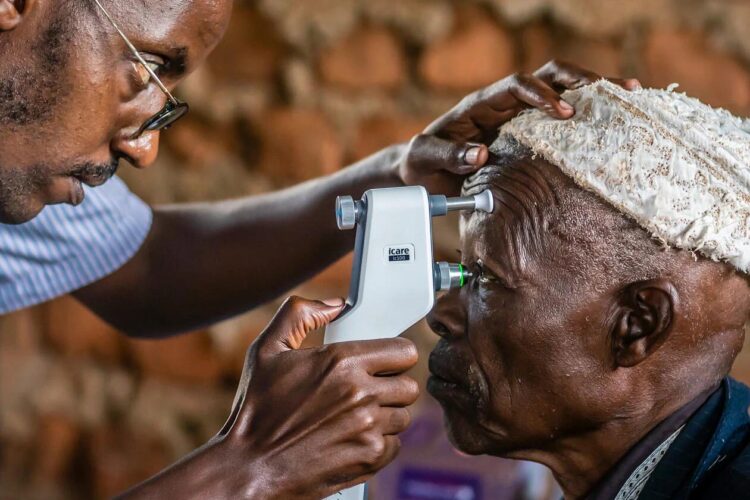
- By BlueBC_Admin
- In Blog
What Is Glaucoma?
 Glaucoma is a disorder that leads to optic nerve damage in the affected eye. It becomes worse over time. It is often connected to a buildup of pressure inside your eye. Glaucoma is often inherited from one generation to the next. In most cases, the condition does not manifest itself until much later in life.
Glaucoma is a disorder that leads to optic nerve damage in the affected eye. It becomes worse over time. It is often connected to a buildup of pressure inside your eye. Glaucoma is often inherited from one generation to the next. In most cases, the condition does not manifest itself until much later in life.
Increased intraocular pressure, also known as eye pressure, can harm the optic nerve, which is responsible for transmitting images to the brain.Glaucoma can cause irreversible vision loss or blindness in a matter of years if the damage is not treated.
Most patients with glaucoma do not have any early signs or symptoms. Make frequent trips to the ophthalmologist so that they can detect and treat glaucoma in its early stages before it causes irreversible vision loss.
It is impossible to regain lost vision once it has been lost. However, reducing the pressure in your eyes can help you keep your vision. Most people with glaucoma can maintain their eyesight as long as they adhere to their doctor’s prescribed treatment plan and get frequent eye exams.
Glaucoma Causes
The fluid is known as aqueous humor, which is contained within your eye and often drains out of your eye through a channel that resembles a mesh. Fluid accumulation can occur when this route is blocked or the eye produces excessive fluid. On other occasions, the professionals are baffled as to what is causing the obstruction.However, it can be inherited, which means it can be handed down from parents to children.
Glaucoma can also be brought on by less frequent reasons, such as a chemical or traumatic injury to the eye, a serious infection of the eye, a blockage of the blood vessels within the eye, or inflammatory diseases.
Glaucoma can also be caused by less common factors, such as a severe eye infection, clogged blood vessels within the eye, inflammatory disorders, an eye injury caused by a blunt object or chemical, or eye damage caused by chemical exposure. Even though it is uncommon, eye surgery to treat another condition can occasionally bring it on.
In most cases, it will affect both eyes, but the symptoms may be more severe in one of them.
Treatment of Glaucoma
The primary goal of treatment is to reduce the patient’s intraocular pressure. Usually, this can be treated medically with eye drops or surgically with laser or surgery. Other treatment options include surgery and laser treatment. The reduction of fluid production is frequently the primary focus of medical treatment. Nevertheless, laser treatment and surgery both maximize fluid drainage. This is accomplished by laser treatment by optimizing the eye’s natural drainage mechanism. The surgical procedure opens up a brand new channel. When the surgery is successful, it will leave behind a little blister or bleb on the surface of the eye, which is the area where the fluid drains now.
If glaucoma is identified earlier, treatment is more likely to be successful. The Vision Care Center is dedicated to providing the most cutting-edge technology that is now available for diagnosing and treating glaucoma at an early stage. This comprises both OCT and HRT for the early diagnosis or detection of injury to the optic nerve. In addition, both our downtown and Gateway facilities are outfitted with computerized visual field analyzers, which allow for the early diagnosis of vision loss in the periphery.
The main types of glaucoma
Chronic Glaucoma
This type of glaucoma, also known as open-angle glaucoma, accounts for 90% of all cases of the eye condition.
Angle-closure Glaucoma
This occurs more frequently in Asian countries. Glaucoma can also be called angle-closure glaucoma, acute angle-closure glaucoma, or narrow-angle glaucoma. Because the drain gap between your iris and cornea has become too narrow, your eye cannot drain as effectively as it should. Because of this, there may be a rapid increase in pressure within your eye.
Secondary Glaucoma
When another disorder, such as cataracts or diabetes, generates additional pressure in your eye, this is called secondary intraocular hypertension.
Our health care insurance provides access to tests and treatment which may be carried out by technicians and optometrists.






